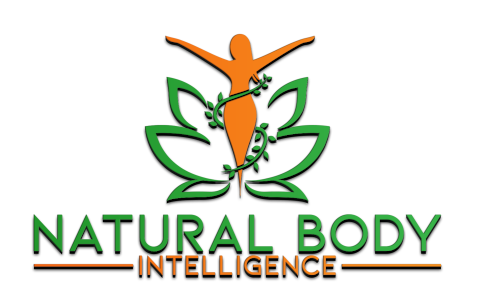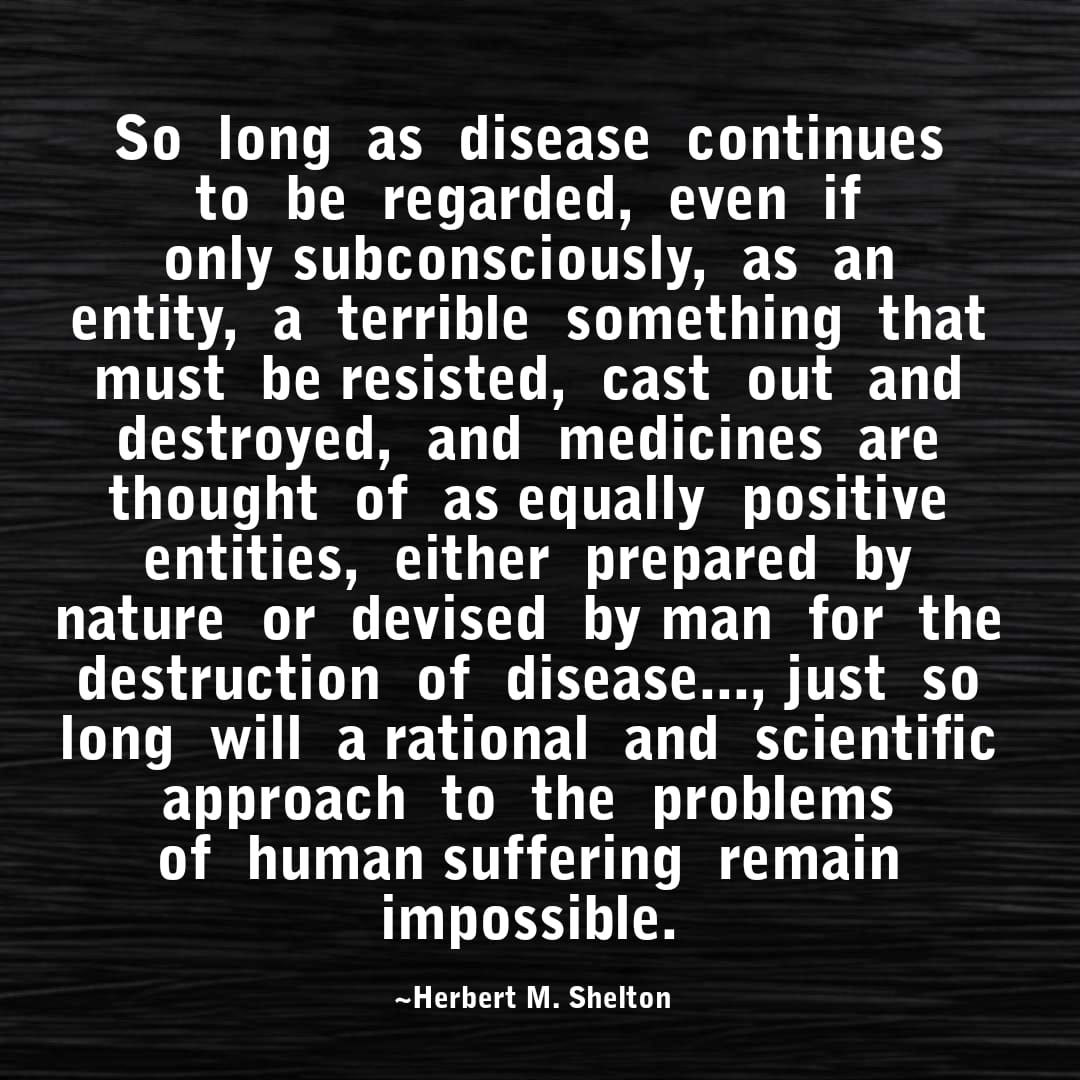Disease, as a word, means very simply not at ease—a person is uncomfortable or suffering difficulties in maintaining energies for the functions he wishes to discharge and in keeping operative those faculties he wishes to exercise. In physiological terminology, disease means deviation from normal. That means that
the body has deviated from regular functions. In a state of disease the body has rechanneled or redirected its energies so that it has less than usual energy for functions normally engaged in.
There are two distinct types of disease. The first type of disease serves a purpose and the
second type serves none.
- The first type is constructive disease, often called acute disease.
- The second type of disease is degenerative. This results from organic impairment in
which organs, tissues, bones, or other faculties have undergone destruction, distortion,
or irreversible impairment.
If diseases are remediable and reversible as most of them are, it is constructive.
When disease can no longer be reversed through body remediable processes, it is degenerative. For instance, an arthritic’s bony deposits can usually be autolyzed and restored to near normal. But when ankylosis has occurred due to destruction of bone and cartilage and subsequent fusing, healthful practices will restore health except for the ankylosis, it is rarely reversible. However, many diseases commonly regarded as degenerative can be corrected by the body, most cases of arthritis being among them.
Disease affects the whole body, not just a part. Disease serves an important body purpose. The body initiates remedial diseases to accomplish a goal. The goal serves the whole body, not just an organ, area, or part. For instance, we can know we have diseased kidneys. But, in actuality, the whole body is diseased. The fact that the symptoms are noticeable only in the kidneys does not mean that the rest of the body is unaffected—it means that the kidneys are the focal point for the eliminative effort, the point at which
toxic matters are put out of the body.
Everything that affects any part of the body affects the whole organism. If we have a bad back, the whole body is affected. We are concerned about the welfare of our toes, fingers, ears, legs, eyes, arms—we defend our whole being because our whole body is a single unit. There are no isolated parts about which we are unconcerned, either at the conscious or unconscious level of intelligence. We defend it all at all levels because it is all of us.
We don’t have a disease here or a disease there. It’s suffered all over. An inflamed appendix has been overloaded with toxic materials because the body is overloaded. Body intelligence puts the overload out through all channels of elimination, but despite this the load is so great the appendix is burdened with more than it can handle. This condition is the same in all remedial diseases where a local organ seems to be the only thing affected.
The body itself institutes the crisis known as disease. Life Scientists call this process a “housecleaning” or healing crisis. Such a procedure by the body is instituted when bodily integrity is compromised or threatened by an accumulation of uneliminated toxic materials. The level of vitality and the extent of the overload determine the type of crisis. Given high vitality as in an infant, a very low level of toxicity is tolerated. In infants, colds are frequent. Given low vitality as in most older people in our society, colds are a rarity. Because so few older people maintain vital bodies, the toxic overload drags them down into chronic diseases, degenerative diseases, and unsuspected pathology that leads to unexpected death or a “sudden onset” of cancer.
The body must be in a toxic state before it will institute a crisis. Neither bacteria nor anything else starts and sustains a crisis. Microorganisms are incapable of unified action; in fact they cannot exist where there is no food (soil) for them, and living cells are not soil for bacteria.
Bacteria are helpless against living cells. An “invasion” by bacteria such as we imagine in contagion never takes place. The bacteria that proliferate in a crisis are with us all the time. We harbour uncounted billions of microorganisms in our intestinal tract, on our skin, in our mouth and nose and other body cavities. Thus, the body is the ONLY, actor in the crisis of elimination or cleansing called a disease.
Bacteria and viruses cannot be blamed for disease. Blaming disease on viruses or bacteria is an easy cop out. It’s not good business to tell a client that they have caused their own miseries, so the medical profession has blamed suffering on everything but the individual’s own failure in the game of living.
The body creates a crisis in response to a body need to free itself of toxic matters and repair damages. Consequently, the body withdraws energy from normal body activities and redirects them to the healing crisis.
The body will reject anything that’s irritating. For example, if dust is put into your nose, the body will secrete mucus to surround and eject the dust irritant. Or you may sneeze. In both cases, the body is acting defensively. Thus, all remedial disease is body defensive action.
Bacteria do not invade organisms for they’re always within the organism. Even after we’ve lost our intestinal flora after fasting, bacteria are still there. Bacteria can in many cases do what bears and many other animals do—hibernate or become dormant. Pasteur was not the father of bacteriology as many people think. Antoine Bechamp was the father of this science. Bechamp was a scientist in the true sense of the word. He took what he called microzyma from the chalk cliffs of France. He found that, upon furnishing water, warmth and other nutrients, the microzyma proliferated. These microorganisms had
been entombed for ten million years in a state of dormancy. So bacteria have certain qualities for survival that most are not aware of.
The celebrated Dr. Lewis Thomas who heads the Sloan-Kettering Cancer Institute said, “pity not the man who has caught bacteria; pity the bacteria that was caught by the man.” This is to say that humans furnish a very rough environment for bacteria. The body keeps them restricted within certain bounds. The body controls bacteria at all times. The body is master of its domain. Bacteria do not control the body as medical people have led us to believe.
Following are two paragraphs from a “bible” on Natural Hygiene, Dr. Shelton’s first major work, Human Life: Its Philosophy and Laws.
“For ages the study of disease has progressed. One by one the various systems and system complexes that are presented by the diseased human body have been studied with painstaking care in both living and dead bodies. The study of pathology has reached a degree of perfection unknown to most of the collateral sciences that form what is called the science of medicine. Knowledge of pathology increased
by leaps and bounds after the invention of the microscope, until today pathology is one of the most important studies for the medical student. Physiology, anatomy, histology and biology are all made subservient to pathology.
The study of disease has fascinated the student for ages. Health has received scant attention. Strange as it may appear, health has been considered of so little importance as to be unworthy of investigation. No schools ever existed for teaching the conditions of health. Medical schools existed to train the student in a knowledge of disease and cures. Even today no school exists that has as its purpose the teaching of the conditions and requirements of health. The conditions of a healthy life are but little understood by the various healing professions and still less so by the general public. Health is not in the professional line of the physician.”
The purpose of disease is so evident that the medics can’t see it. They are looking for something that doesn’t exist, and they have no idea, after countless millions of man hours of chasing microbes and
similar deadends, that viruses as living entities do not exist.
So they have gone into the phenomenon of disease elaborately and have chronicled over twenty thousand different diseases. They name them after the area that is most affected. Sometimes they have multiple names because of the number of organs or organ systems or tissues which art affected.
Now you know what disease really is you can make informed choices to take care of your health and use a natural healing modality.

